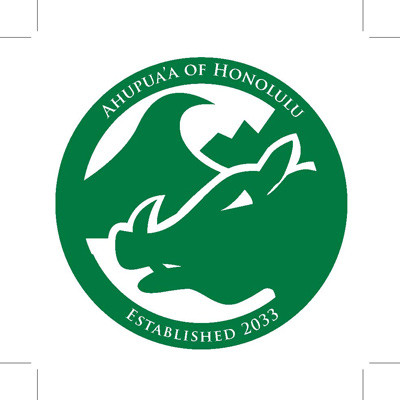Americana: Hawaii
02 - 20 Sep 2008
AMERICANA: HAWAII
Island Forecast
Mary Augustine Gallery
Sept. 2–20, 2008
The state of Hawaii has the distinction of being the most remote population center on the planet; a vast distance of 2390 miles separates the islands from California, the nearest populace. While the mainland United States covers a seemingly endless expanse of land, Hawaii is acutely defined by its modest physical boundaries. It is far more vulnerable than the rest of the country to the shifts of agricultural industry, technological development, military needs, and tourism. This state serves as an ideal laboratory in which to examine the effects of these forces of change, and provides a dynamic home for one of the most influential think tanks in the world—the Hawaii Research Center for Futures studies.
Futures researchers utilize foresight, strategic plans, and multidisciplinary analysis to formulate possible outcomes. In his seminal 1999 essay Four Futures for Hawaii Jim Dator, director of the Hawaii Research Center for Futures studies, outlined a framework of four possible future directions for the state of Hawaii. His essay The Best Little Backwater on the Planet: Too Local to be Global* expands one of these in detail and describes a sovereign state that has been freed of rampant tourism and isolated from outside influence. This imagined future for Hawaii provides the starting point for the research of two of Dator's PhD students, Jake Dunagan and Stuart Candy, whose work is featured in this exhibition. Exploring the idea of Hawaii one hundred years into the future and after 70 years of complete isolation from the outside world, their work takes a narrative form, as well as representing their ideas through the production of images and artifacts.
As you look at the display, imagine you are three generations into the future and outsiders have not been able to visit the Hawaiian Islands for decades. The land of luxury resorts and tiki-torches that one might now associate with the state has disintegrated and Hawaii has become an independent nation. The objects that are on display are artifacts from this future. They tell the story of one man's experiences and discoveries while living on the islands during this time of seclusion, drastic transition, and cultural rebirth.
Sally Szwed
*Both Jim Dator's The Best Little Backwater on the Planet: Too Local to be Global, as well as Stuart Candy and Jake Dunagan's narrative, created especially for this project, are available as supplementary materials for this exhibition.
Island Forecast
Mary Augustine Gallery
Sept. 2–20, 2008
The state of Hawaii has the distinction of being the most remote population center on the planet; a vast distance of 2390 miles separates the islands from California, the nearest populace. While the mainland United States covers a seemingly endless expanse of land, Hawaii is acutely defined by its modest physical boundaries. It is far more vulnerable than the rest of the country to the shifts of agricultural industry, technological development, military needs, and tourism. This state serves as an ideal laboratory in which to examine the effects of these forces of change, and provides a dynamic home for one of the most influential think tanks in the world—the Hawaii Research Center for Futures studies.
Futures researchers utilize foresight, strategic plans, and multidisciplinary analysis to formulate possible outcomes. In his seminal 1999 essay Four Futures for Hawaii Jim Dator, director of the Hawaii Research Center for Futures studies, outlined a framework of four possible future directions for the state of Hawaii. His essay The Best Little Backwater on the Planet: Too Local to be Global* expands one of these in detail and describes a sovereign state that has been freed of rampant tourism and isolated from outside influence. This imagined future for Hawaii provides the starting point for the research of two of Dator's PhD students, Jake Dunagan and Stuart Candy, whose work is featured in this exhibition. Exploring the idea of Hawaii one hundred years into the future and after 70 years of complete isolation from the outside world, their work takes a narrative form, as well as representing their ideas through the production of images and artifacts.
As you look at the display, imagine you are three generations into the future and outsiders have not been able to visit the Hawaiian Islands for decades. The land of luxury resorts and tiki-torches that one might now associate with the state has disintegrated and Hawaii has become an independent nation. The objects that are on display are artifacts from this future. They tell the story of one man's experiences and discoveries while living on the islands during this time of seclusion, drastic transition, and cultural rebirth.
Sally Szwed
*Both Jim Dator's The Best Little Backwater on the Planet: Too Local to be Global, as well as Stuart Candy and Jake Dunagan's narrative, created especially for this project, are available as supplementary materials for this exhibition.

